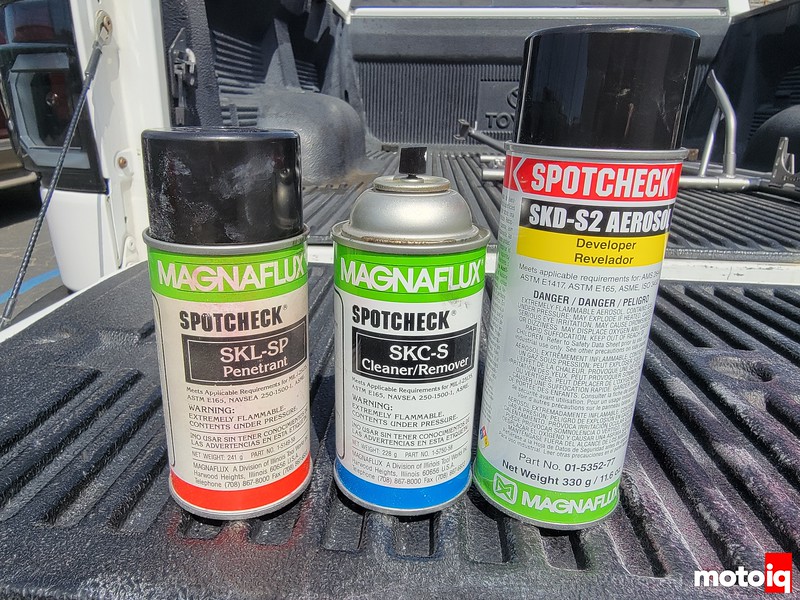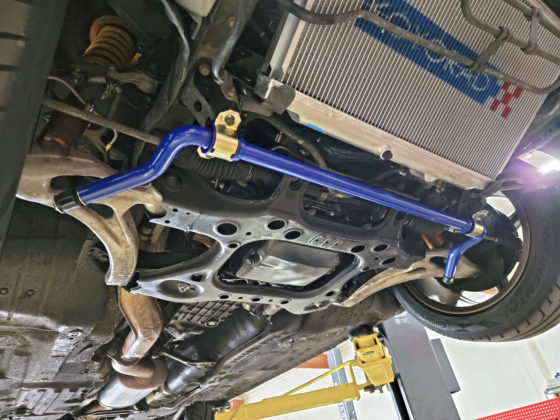
Crack detection is important in the performance world. The ability to find cracks in parts that are under stress is a good tool in preventative maintenance and can prevent catastrophic failure and accidents due to parts failure. For very accurate crack detection on the surface or even deep cracks just under the surface, there are processes like Magnaflux that use magnetic particles. This is what we commonly do with engine and transmission parts in between rebuild cycles. However, this requires specialized equipment and we send parts out for this sort of inspection. For a quick check under shop conditions, the Magnaflux company has simple dye penetrant crack detection kits that can find surface cracks in a shop environment. We use the Magnaflux SK crack detection kit in our shop to help us find cracks. usually in chassis parts.

In this case, we were looking for a crack in one of our racing karts. It had been involved in an accident and we noticed that the paint was cracking at a welded joint. We scraped the paint off and it looked like a crack under the paint. The first thing we did was to media blast the area to thoroughly strip the paint, scale, and corrosion from the area. Now looking at the cleaned joint, it now didn’t look cracked but we wanted to make sure it was ok. On this side of the frame where it had appeared to be cracked, it looked fine after the media blast.

On the backside, there was some welding porosity and a spot where it looked like the electrode got stuck during welding. For an expensive European racing kart, we were seriously meh about the quality of the fabrication under the powdercoat. Those are some sloppy mig welds!




2 comments
We use LPI testing for our air/oil separators at work. They’re all aluminum or stainless steel so MPT doesn’t work. Removing any coatings is really important. Even anodizing can prevent the dye from seeping into the crack.
Zyglo is the process for Non Ferrous metals and now Magnaflux has a process also.